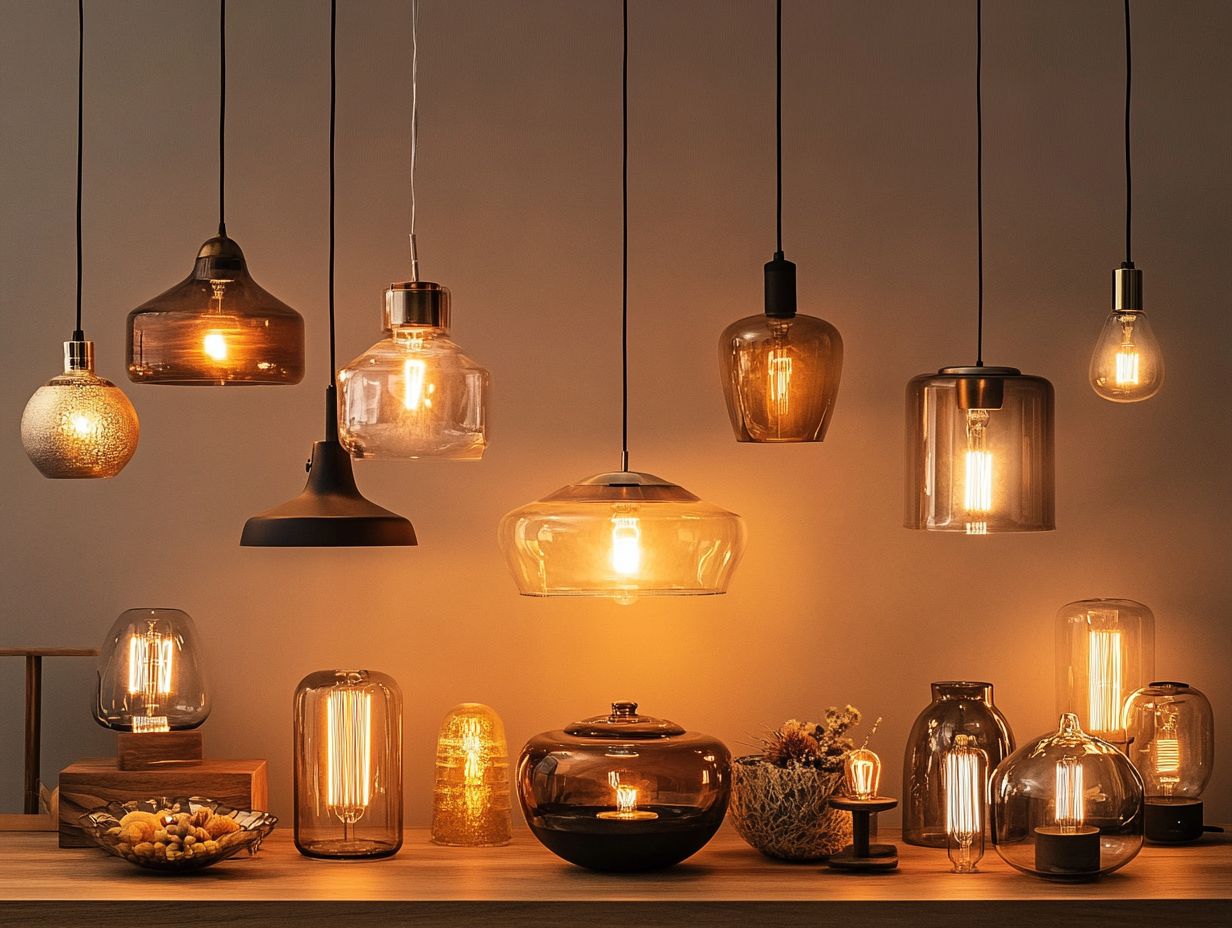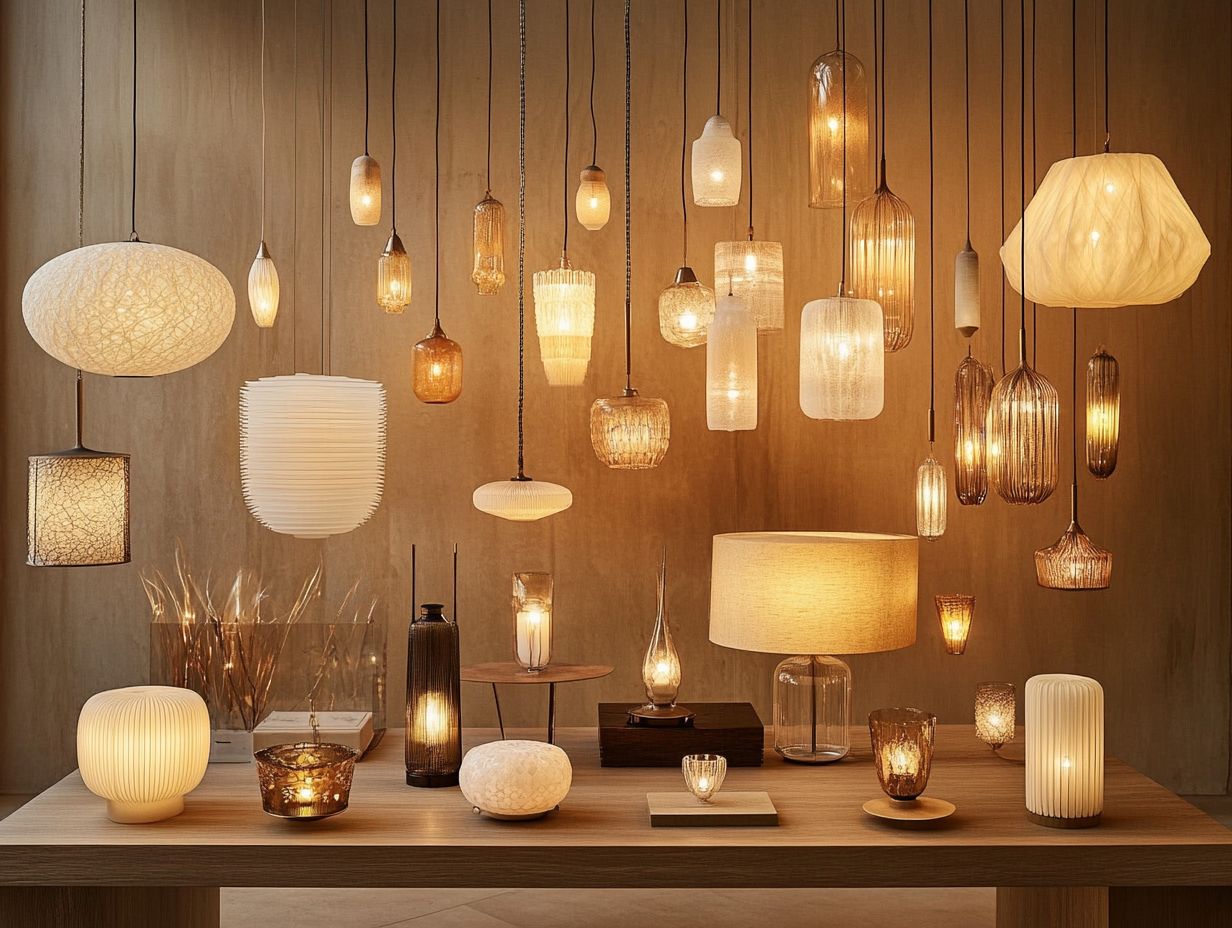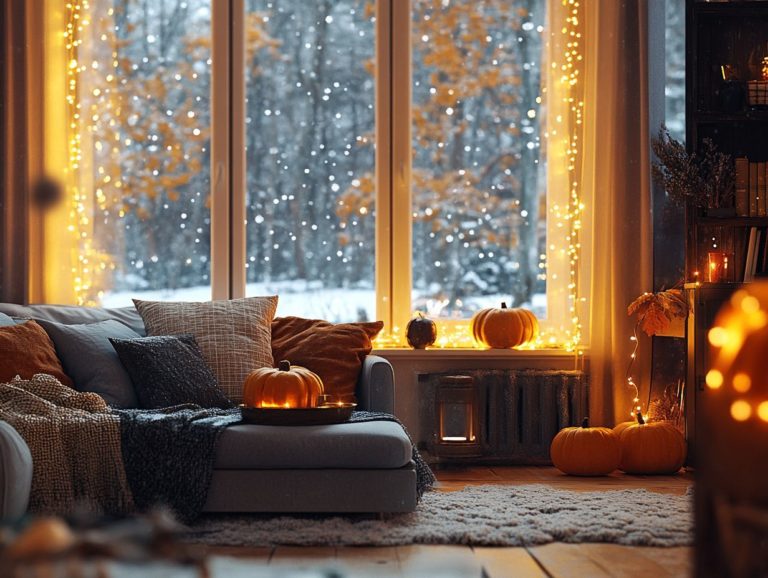“Understanding Different Types of Light Fixtures”
Light fixtures are essential for defining the ambiance and functionality of any space.
From ceiling fixtures to table lamps, the variety can make selection feel daunting.
In this exploration, you ll discover the various types of light fixtures, key considerations to keep in mind during your selection, and expert tips for proper installation.
Whether your goal is to improve your home’s look or enhance energy efficiency, this guide is packed with valuable insights to assist you.
Contents
- Key Takeaways:
- Types of Light Fixtures
- Factors to Consider when Choosing Light Fixtures
- Tips for Properly Installing Light Fixtures
- Frequently Asked Questions
- What are the different types of light fixtures?
- How do recessed lights differ from other types of light fixtures?
- What are the advantages of using pendant lights?
- What is the difference between track lights and wall sconces?
- What should I consider when choosing a chandelier?
- What is the best type of light fixture for a small space?
Key Takeaways:

- Light fixtures come in various types such as ceiling, wall, table and floor lamps, and specialty fixtures.
- When choosing light fixtures, consider functionality, design, energy efficiency, budget, and maintenance.
- Proper installation of light fixtures requires safety precautions, as well as the use of necessary tools and materials.
What are Light Fixtures?
Light fixtures are not just practical elements in your interior design; they are essential for crafting an atmosphere that speaks to your style and enhances the overall aesthetic of your space.
With options like chandeliers, pendant lights, and wall sconces, you can find pieces that marry functionality with decorative charm.
Understanding the significance of light fixtures helps shape a well-lit, inviting environment that reflects your unique design sensibilities.
These lighting elements set the mood and affect how colors and textures look in your room. For instance, warm-toned fixtures can create a cozy, intimate glow, while cooler lights energize the atmosphere.
Thoughtful placement of these fixtures can transform the visual flow of your interiors, drawing attention to architectural features and artwork while minimizing unwanted shadows.
Choosing the right fixtures goes beyond just utility; it s about curating a sensory experience that resonates with emotional comfort and aesthetic harmony.
Types of Light Fixtures
The array of light fixtures available today is truly impressive. You can find everything from elegant chandeliers and chic pendant lights to sleek recessed lighting and adaptable wall sconces.
Each type serves a distinct purpose, elevating the functionality, ambiance, and overall aesthetic of spaces like kitchens, living rooms, and bedrooms.
Embracing this variety allows you to create the perfect atmosphere tailored to your unique style.
Ceiling Fixtures
Ceiling fixtures, including flush-mount designs and recessed lighting, are essential components of ambient lighting. They provide necessary illumination while enhancing the aesthetic of any room.
They elevate not just the visual appeal but also the functionality of the space, making them vital for achieving your desired atmosphere.
For example, pendant lights can serve as a warm, inviting focal point above dining areas, while ceiling fans with integrated lights offer both illumination and airflow, ensuring your comfort.
When choosing fixtures, consider the ceiling height; taller ceilings may require suspended light fixtures that draw the eye upward, enriching the sense of space and grandeur.
By thoughtfully selecting fixtures that align with your design preferences, you can cultivate an inviting environment that harmoniously balances aesthetics with practical lighting needs.
Wall Fixtures
Wall fixtures, especially wall sconces, provide a sophisticated solution for accent lighting. They craft indirect illumination that highlights architectural features beautifully.
Position them strategically to draw attention to artwork, textured walls, or intricate moldings. The gentle glow creates a warm atmosphere for entertaining or relaxing.
These sconces can complement other lighting sources like chandeliers and table lamps. Whether enhancing a cozy living room or a refined dining area, they significantly elevate your decor.
Table and Floor Lamps

Table and floor lamps balance functionality with style. They allow you to customize the ambiance with warm or cool tones.
These lamps are not just light sources; they’re decorative elements that enhance your space. In your living room, they create a comfortable reading nook with focused illumination.
In the bedroom, they fill your space with soft, inviting light, perfect for relaxation. By selecting the right designs, like sleek metal or textured ceramic, you can blend practicality and beauty.
Specialty Fixtures
Specialty fixtures offer unique designs that meet functional needs and add decorative charm. They often use energy-saving technology for efficiency.
Imagine pendant lights or under-cabinet lighting enhancing various environments. Pendant lights can be stunning focal points in dining areas.
By incorporating dimmable LED options, you can enhance energy efficiency and set the perfect ambiance. Energy-saving wall sconces create a warm and welcoming space.
Exploring diverse fixture types opens a world of innovative solutions, blending aesthetics with practicality.
Factors to Consider when Choosing Light Fixtures
When selecting light fixtures, consider key factors that impact your choices. Focus on functionality and design to ensure they fit your space.
Energy efficiency is crucial. Choosing eco-friendly options saves money over time. Keep your budget constraints in mind, and consider the ease of maintenance.
Making informed decisions will help you achieve both style and practicality.
Functionality and Design
Functionality and design are essential when selecting light fixtures. They help create a well-lit space that complements your style.
Evaluate how different fixtures affect a room’s ambiance. For instance, recessed lighting offers a sleek look while brightening work areas.
In contrast, decorative pendant lights can become eye-catching focal points in living spaces. Achieving a balance between aesthetics and practical needs ensures your lighting serves specific purposes.
Incorporating energy-efficient options alongside stylish designs blends sustainability with elegance, demonstrating a commitment to both beauty and responsibility.
Energy Efficiency
Energy efficiency plays a pivotal role in your choice of light fixtures. Consider options like compact fluorescent lamps and LED lights; they offer substantial savings on energy costs and align with a sustainable approach to selection.
By adopting these lighting types, you’ll enjoy lower electricity bills! You’ll also lessen the demand on power plants, which leads to lower greenhouse gas emissions. When you choose energy-efficient options, you contribute to a larger environmental strategy that fosters a cleaner future.
These solutions usually last longer than traditional incandescent bulbs, meaning fewer replacements needed and less waste for you to manage. Therefore, transitioning to energy-efficient lighting is a vital step for anyone looking to embrace sustainable practices while enjoying a more cost-effective lighting solution.
Budget and Maintenance

Budget and maintenance considerations are crucial when selecting light fixtures, influencing both your initial investment and the long-term costs tied to cleaning and upkeep.
Choosing the right lighting is a fine balancing act. You need to weigh the initial expenditure against future maintenance needs. As a homeowner or property manager, it’s essential to seek fixtures that fit within your financial parameters and provide long-lasting and easy-to-clean options.
By opting for quality materials, such as energy-efficient LED options with a long lifespan, you can significantly minimize ongoing maintenance costs while elevating the aesthetic appeal of your spaces.
Selecting the right fixtures can result in fewer replacements and repairs over time, ensuring your budgetary decisions contribute to an attractive and functional environment.
Tips for Properly Installing Light Fixtures
The proper installation of light fixtures is essential for ensuring both functionality and safety. It demands your careful attention to safety precautions, along with the right tools and materials tailored for the task at hand.
Safety Precautions
When you install light fixtures, prioritizing safety precautions is essential to prevent accidents and ensure a proper installation. This includes understanding electrical safety and, if necessary, consulting a lighting designer.
These measures are crucial because they significantly reduce the risk of electrical shock or fire hazards. Always remember to turn off the power supply at the circuit breaker before starting your installation. It’s wise to use insulated tools and wear rubber-soled shoes to guard against any unexpected electrical exposure.
In many cases, consulting with licensed electricians is a smart choice, especially when dealing with complex wiring systems or high-voltage setups. Seeking professional assistance ensures compliance with local codes and boosts the chances of achieving a successful and safe fixture installation.
Tools and Materials Needed
Successfully installing light fixtures requires the right tools and materials at your disposal, including basic electrical tools and any specific components essential for the fixture you re working with.
These essentials not only streamline the installation process but also ensure safety and compliance with electrical standards. Basic tools like screwdrivers, pliers, and wire strippers are vital for connecting wires and securing fixtures. Having a voltage tester on hand allows you to verify that the power is off before you begin, significantly reducing the risk of electrical shock.
Additionally, specialty components such as junction boxes and mounting brackets provide necessary structural support, ensuring that your fixtures are anchored securely. Collectively, these tools and materials enhance both the efficiency and reliability of your installation, paving the way for effective maintenance and optimal fixture performance.
Frequently Asked Questions
What are the different types of light fixtures?

Light fixtures come in various types. Some of the most common are recessed lights, chandeliers, pendant lights, track lights, wall sconces, and flush mount lights.
How do recessed lights differ from other types of light fixtures?
Recessed lights sit inside the ceiling, giving a sleek appearance. They are also known as can lights or pot lights.
What are the advantages of using pendant lights?
Pendant lights are very versatile. They work well for task lighting, ambient lighting, or simply for decoration.
What is the difference between track lights and wall sconces?
Track lights are adjustable, allowing you to direct light to specific areas. Wall sconces, on the other hand, provide fixed, targeted light, often used for accent or ambient purposes.
What should I consider when choosing a chandelier?
When picking a chandelier, think about the room’s size and height. Make sure it matches the room’s style and provides the right amount of light.
What is the best type of light fixture for a small space?
In small spaces, recessed lights or track lights are great options. They have a low profile and won t clutter the visual space while offering sufficient lighting.






